On the road to a renaissance
Istria in Croatia is a wine region that you should keep an eye on. “The Wild Bunch” is a handful of new winemakers who are creating very interesting wines. The wine industry is exiting, with a new dynamic after the creation of Croatia, with interesting local vine varieties, malvazia, teran and others.
This text was previously published in installments on BKWine Magazine.
Magnificent Malvazia
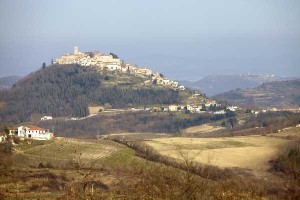
Are you looking for something different, out of the ordinary? Wines that don’t taste like everything else? Go to Istria and taste their extraordinary malvazia (that can also be written malvazija or malvasia)!
Istria is a coastal region in the north of Croatia. Italy is just around the corner and you can’t help noticing. For one thing the whole of Istria is a bilingual region, so everybody speaks Italian and Croatian. You also have a strong Italian influence in the gastronomy and the architecture.
Istria has a long wine tradition but during the time of Yugoslavia good quality wines were not the order of the day. New producers and a new generation are now struggling to make the world realize that the quality has gone up. Most of the Istria wines are still sold in Croatia but export is increasing. We wish them luck because their wines are really worth it! Istria has 5000 hectares of vines (approx. like Saint Emilion) and around 120 producers. “Many of us are young, small producers from same generation and we all look for quality”, says Ivica Matosevic who has a vineyard outside the town of Pula.
Acacia and Ivica Matosevic
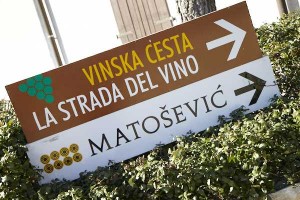
Ivica Matosevic is the first one to make wine in his family. “You can’t make a lot of money in wine” he says, but it is a nice job! And people like my wines, think they are very drinkable.” He used to work as a landscape architect and 1996 was his first vintage. He is, as most producers in Istria, specialized in malvazia. But he also makes good red wines from the local Teran. Like malvazija, this is a grape with a strong personality and he prefers to blend it with Merlot to get a better balance.
His bestseller is the clean and fresh malvazija Alba. It is bottled early after fermentation on stainless steel tanks. “I want to keep the freshness, this should be an easy-drinking product”, he says. It expresses beautifully the fresh and floral character of malvazia. There is a pleasant bitterness at the finish, also very typical.
Another typical aroma of the malvasia is the acacia flower. Maybe that is why Istrian producers are experimenting with ageing in acacia wood. “We have a local cooper who works with acacia wood, it is quite hard to work with and it gives a strong taste”, says Ivica. “I use 15 % of acacia barrels but never new wood. The acacia gives smoky notes to the wine and also some honey but it allows the wine to keep the extraordinary freshness that Malvazia is capable of.”
Breaking new ground; Kozlovic & Tomaz
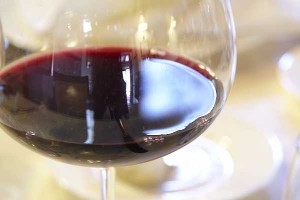
Gianfranco Kozlovic is also experimenting with acacia wood. His Acacia malvazija is aged for nine months and he likes the result so far. And he thinks it is important to do something different. The wine is very good, it has personality and character. And an incredibly long aftertaste. And the acacia is there, definitely, but if it comes from the barrels or from the grape…He also makes a malvazia with 12 hours of skin contact. It is more powerful, of course, with hints of peach and ripe apples, but the freshness and the flowers are still there. I love the high acidity in these wines. malvasia could easily become my favourite white grape, a shame that it is so difficult to get outside of Croatia.
It has not been easy for the young quality-minded growers in Istria. “I didn’t start at zero”, says Klaudio Tomaz in Motovun, “I started at minus 20! The big coop here has made a lot of damage to our reputation.”
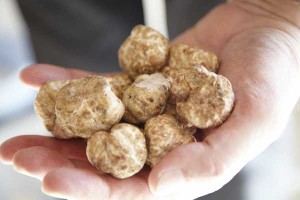
Klaudio and Daniella Tomaz is a young couple with 8 hectares of their own and another 10 on lease. The town of Motovun has a long wine tradition but for a long time the coop only focused on mass production. The Tomaz couple makes quality wine and they want to make their personal style of Malvazija. “We have a different climate and soil here, compared to other places in Istria”, says Klaudio. His basic Malvazija is very pleasant and floral, quite powerful and very fresh and dry. He also makes another Malvazija, with two weeks of skin contact, which is a traditional way of making Malvazija in Istria. This wine is aged in mulberry wood (!). His sweet Malvazija is a remarkable wine. The grapes are dried for 100 days after the harvest. They are pressed and the must ferments slowly in 2 year old oak barrels for 3 months. The alcohol reaches 16,8 % and the nose is smoky with a certain bitterness and aromas of dried figs. Definitely interesting!
With an international reputation: Markezic and Degrassi
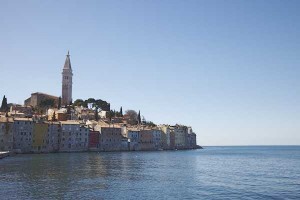
One of the most established and well known producers in Istria is Marino Markežić at Kabola. He wants to go back to the roots. And his way of doing this is to ferment and age his malvazija in clay amphoras with the skins. “The wine breaths and because it stays in contact with the skins for seven months you get everything out of the skins!” It is definitely an interesting wine, as are all Kabolas wines, it is very dry, nutty and powerful and it has a beautiful amber colour.
Moreno Degrassi is also quite well known. He wants to show the world that it is possible to make wines in Istria from other grapes than malvazia och teran. Therefore he grows 16 different varieties: Chardonnay – quite exotic and fruity – the only Viognier so far in Istria, cabernet sauvignon, cabernet franc, pinot noir, petit verdot and many more. He likes the local varieties however, and he thinks Istria must keep its special terroir style to be able to compete. But the wines should be made in a soft and accessible style, he thinks. The temper of Teran in tamed with oak ageing, “it softens the acidity”, he says. You can tell that he adapts to the international market. His wines are very well made but not as typical Istrian as the wines from Tomaz, Matosevic and Kozlovic. For the moment he sells most of his production of 130 000 bottles in Croatia but more and more bottles are exporter.
An Austrian in Istria explains
Guido Schwengersbauer has lived in Croatia for many, many years. Today he runs a charming small hotel called La Parenzana in the small village of Buje on the Istrian peninsula. One of his passions is the Istrian wine and food.
We met Guido recently when we were travelling in Istria and talked about the Istrian wine and food the he so loves. Watch the video interview here, Guido talks about wine and food from Croatia:
BKWine organises wine tours to Croatia on a custom designed basis. We have for example organised an autumn tour to visit the wineries, taste the teran and malvazia wines and experience the exclusive white truffles of Istria. More info on the wine and food tours on BKWineTours.com.








